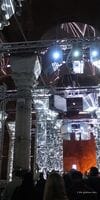Cisterns in Istanbul have been known since the time of Constantinople (now the city of Istanbul).
Since there were very few sources of fresh water in the city (Constantinople), the locals felt the need to collect and store fresh water.
For these purposes, the Byzantines built a system of aqueducts (aqueducts) and cisterns (reservoirs). Through aqueducts, water was delivered to cisterns, which were open and closed, and in which fresh water was stored.
The cisterns also differed in their designs. Some collected rainwater, while others were filled by the water supply systems laid to them.
There were a lot of such cistern reservoirs in the city. They were built under fortresses, palaces, rich houses and churches.
Today, some of the reservoirs have dried up, others have been destroyed or are in ruins, while others underground reservoirs have been converted into museums that can be visited and which are significant sights of the city.
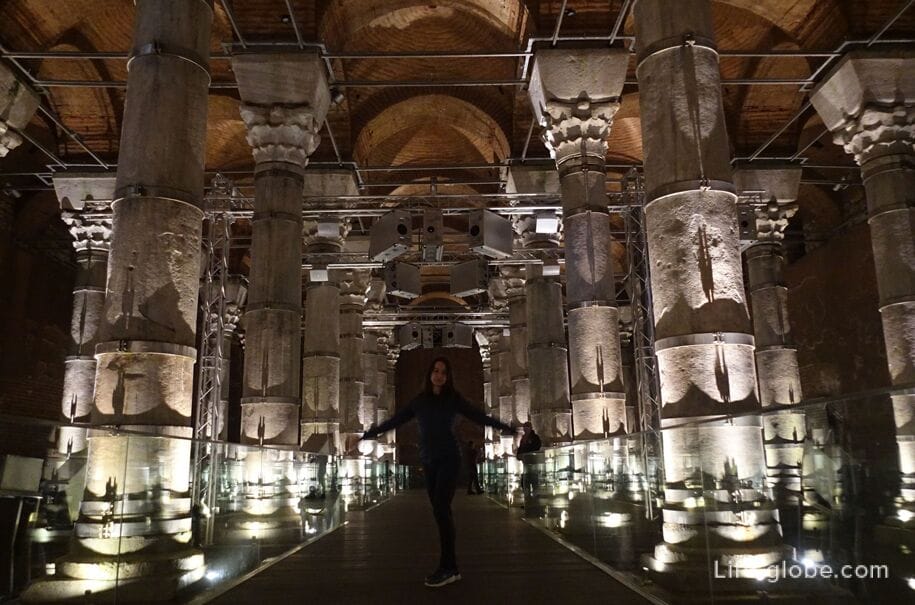
Cisterns-museums in the center of Istanbul that you can visit
Basilica Cistern
The Basilica Cistern or Yerebatan Cistern (Yerebatan Sarnıcı) is one of the most famous, large and well-preserved underground reservoirs of Constantinople.
The cistern was built under the Byzantine Emperor Justinian I and was popularly called the "cistern-palace" because of the marble columns rising from the water, seemingly countless. The name "Basilica cistern" comes from the fact that there was a basilica at this place.
The cistern is a large underground structure that held about 100,000 tons of water and occupies a rectangular area equal to 140 meters in length and 70 meters in width. Inside the tank there are 336 columns with a height of 9 meters each, which form 12 rows of 28 columns each. Most of the columns were brought from ancient temples and old buildings, while others were carved from various types of marble. Therefore, the columns in the tank differ from each other.
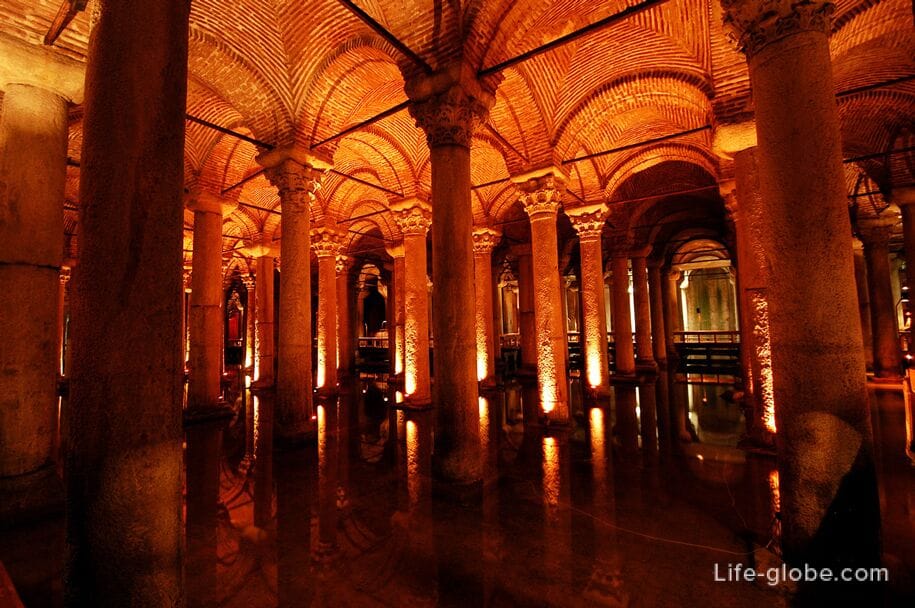
One of the columns of the cistern is called the "Weeping column" or "Column of tears". It got this name due to the fact that, unlike other columns in the tank, it always remains wet, and there are patterns on its surface that resemble tear drops in shape.
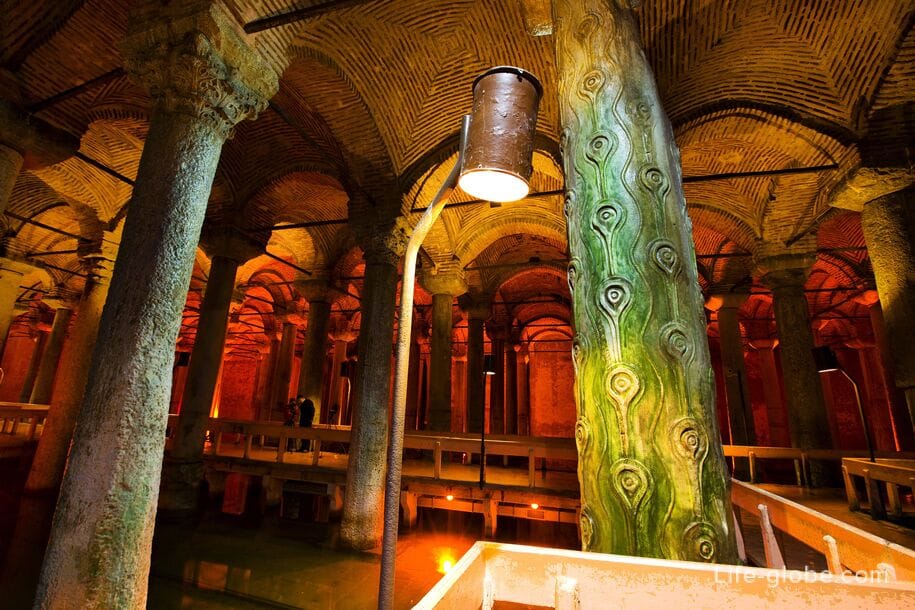
The two Medusa heads used as pedestals under two columns in the northwest corner of the cistern are among the masterpieces of sculptural art of the Roman period.
Several legends are associated with these sculptures. According to one legend, paintings and sculptures of the Gorgon were used at that time to protect large structures and private premises, so the head of the Jellyfish was placed in a Cistern. According to another rumor, Medusa was a girl who was proud of her black eyes, long hair and beautiful body. Medusa loved Zeus' son Perseus. Meanwhile, Athena also loved Perseus and was jealous of Medusa. Therefore, Athena turned Medusa's hair into snakes, and all those who looked at Medusa turned into stone. Later Perseus cut off Medusa's head and used her power to defeat many enemies. Based on this, in Byzantium, the head of Medusa was engraved on the hilts of swords and placed upside down on the bases of columns so that the beholders would not be turned into stone.
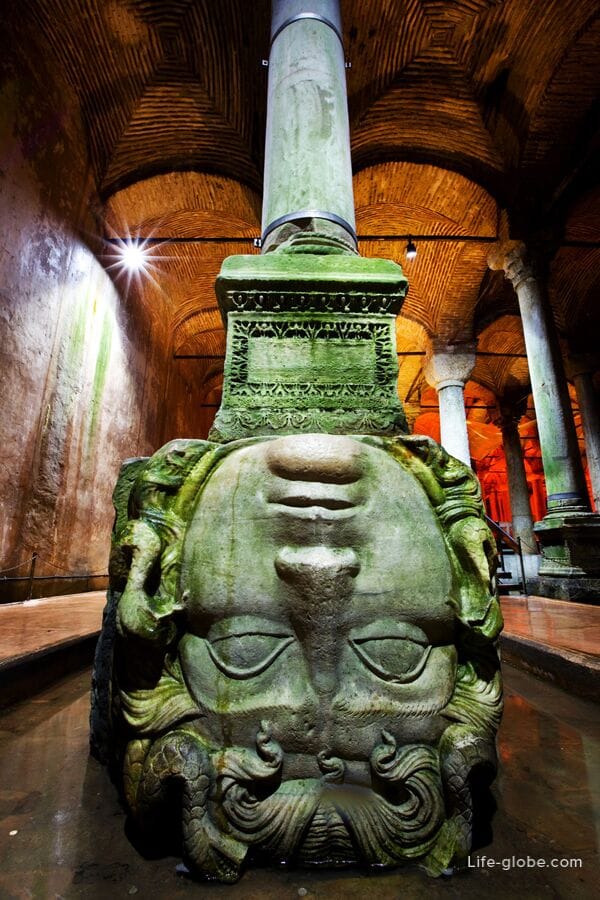
The Basilica cistern has been captured in cinematography, including in the films "From Russia with Love", "Inferno" by Dan Brown, "The Invincible Sun" by V. Pelevin.
The Basilica Cistern is located in the historical center of Istanbul, not far from Blue Mosque and Hagia Sophia Mosque, at address: Alemdar, Yerebatan Cd. 1/3, 34110 Fatih/Istanbul, Turkey.
Entrance to the cistern is paid.
The site of the Basilica Cistern:yerebatan.com/tr.
Theodosius Cistern
The Theodosius cistern or the Sherefiye cistern (Şerefiye Sarnıcı) is also one of the largest and most significant closed cisterns in the city, which has been restored today and functions as a museum, where visitors are shown a 10-minute show with three-dimensional effects and music.
It is assumed that the Sherefie cistern was built in 428-443, during the reign of Theodosius II. Water was delivered to the cistern from the aqueduct of Valens.
The cistern of Theodosius has the shape of a rectangle measuring approximately 45 × 25 meters and a ceiling height of 11 meters. It has 45 sail arches supported by 32 monolithic marble columns, girded with iron brackets and reaching a height of 9 meters. Read more about the Feodosiya cistern with photos...

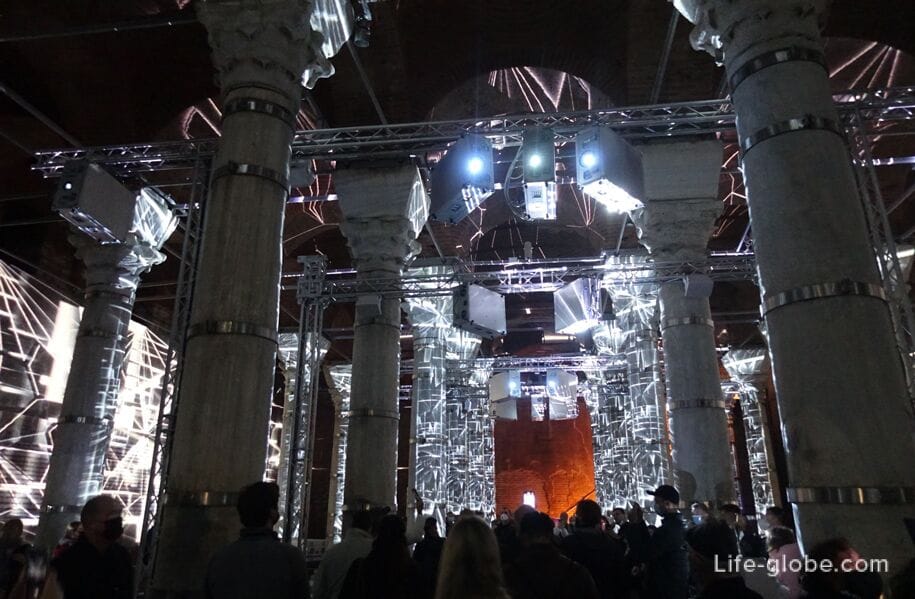
The Theodosius Cistern is located under a modern building, the entrance is from Piyer Loti Caddesi Street No. 2/1.Cistern address: Binbirdirek, Piyer Loti Cd. No:2/1, 34122 Fatih/Istanbul, Turkey.
Entrance to the cistern is paid.
Theodosius Cistern website: serefiyesarnici.istanbul.
Binbirdirek Cistern
The Binbirdirek Cistern (Binbirdirek sarnıcı), also known as the Philoxena Cistern (ΚινστρΡνα ΦιλονΝου), is the second largest reservoir in Istanbul after the Basilica Cistern.
From Turkish, the word "Binbirdirek" translates as "1001 columns", although in fact there are much fewer columns in the cistern.
The cistern was built during the reign of Constantine I (4th century). Over time, the cistern dried up, and was used as a workshop from the 16th century.
The cistern contains 212 of the 224 original columns. The area of the preserved cistern is 3584 square meters.
The columns in the cistern consist of two superimposed parts with truncated pyramidal capitals. It is known that the Greek letters engraved on the bodies of the columns are the signs of the masons who worked on the construction of the cistern and on the columns.

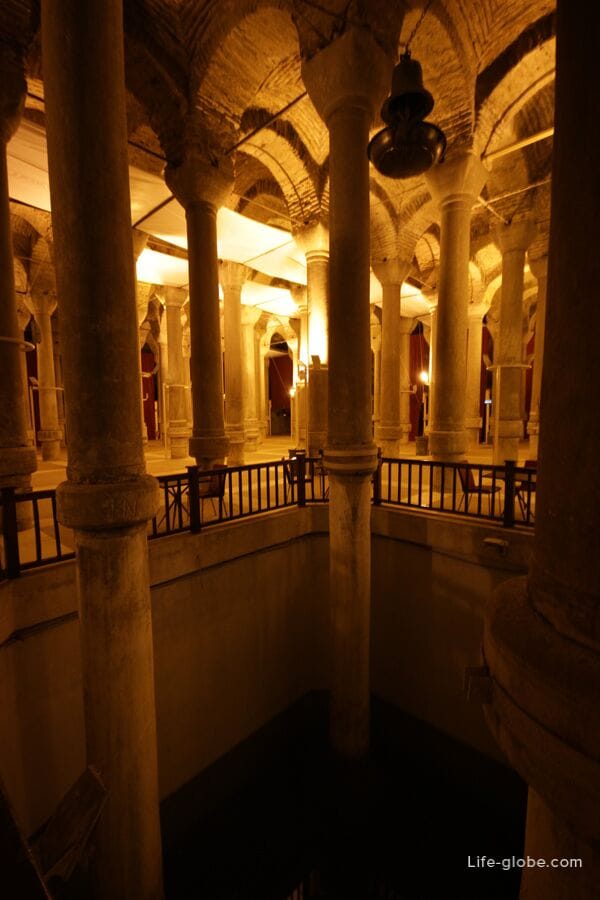
The Philoxene cistern is open to visitors as a museum. It is also used for exhibitions, concerts, banquets, weddings and other celebrations.
Entrance to the cistern is paid.
Binbirdirek Cistern Address: Binbirdirek Mah. İmran Öktem Cad. 34122 Fatih / İSTANBUL.
Binbirdirek Cistern website: binbirdirek.com.tr.
Nakkash Cistern
Nakkash cistern (Nakkaş sarnıcı) or Nakilbent cistern, was built in the 6th century and is located under the Nakkaş carpet store.
This cistern is not as famous and large as the three above.
Exhibitions are held in the cistern.
Address cistern: Nakilbent Sok. No:13 34122 Sultanahmet / İSTANBUL.
The store's website: nakkasrug.com .
All four of the above cisterns can be visited, they work as museums, are the largest and most interesting, and also, conveniently, are located close to each other - in the historical center of Istanbul, in the Fatih district, near Sultanahmed Square (Hippodrome).
Most likely, the listed tanks will be quite enough to get acquainted with the underground Istanbul. Nevertheless, there are other underground and open (ground) cisterns in the city, which now house restaurants, a wedding palace, etc. There are also cisterns in the Topkapi Palace and in the Rumelikhisar Fortress.
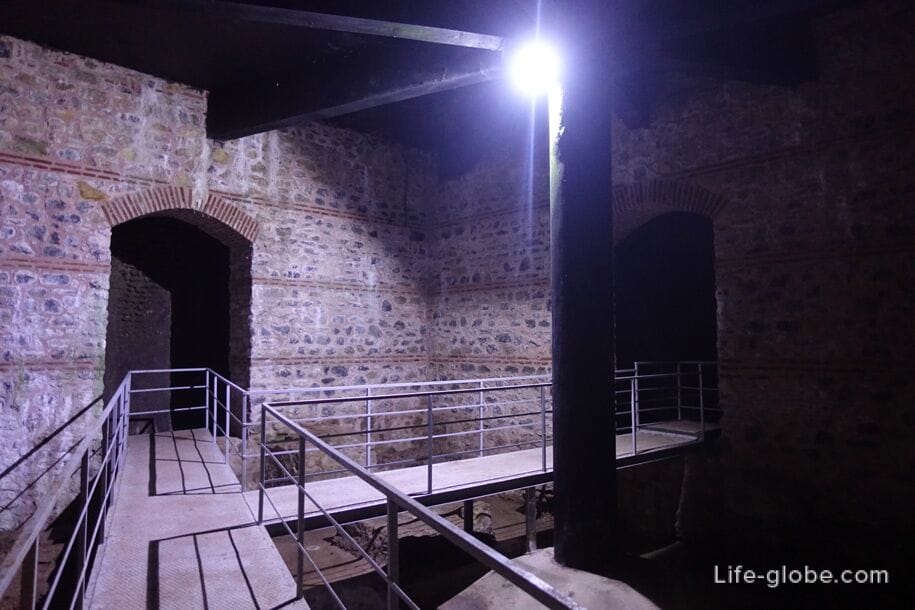
Cisterns-restaurants
Cistern-restaurant "Sarnıç Fine Dining Restaurant", where the restaurant is located in the 1500-year-old Byzantine cistern of Istanbul.
The cistern, which was built in 542 AD during the reign of the Eastern Roman Emperor Justinian I to supply water to the Grand Palace and the structures around it, was eventually filled with earth. The cistern was cleaned and renovated in the 1980s and reopened, but as a restaurant.
The address of the cistern restaurant: Cankurtaran, Soğuk Çeşme Sk. No:26, 34122 Fatih/Istanbul, Turkey.
The website of the cistern restaurant: sarnicrestaurant.com/tr .

Cistern-restaurant "Antik Cisterna", over which the 4-star hotel Antik Hotel Istanbul is built today
Address of the cistern-restaurant (hotel): Ordu Cad. Sekbanbasi Sk No:6 Beyazit Fatih, Fatih, 34130 Istanbul, Turkey.
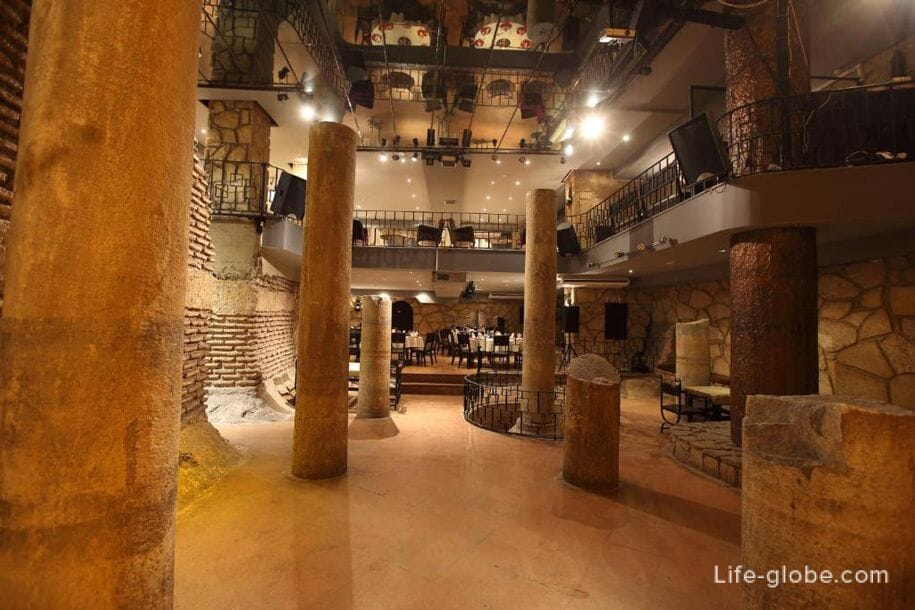
The Aqueduct of Valens
From the former extensive network of aqueducts of Istanbul and the suburbs, the remains of the large aqueduct of Valent or Bozdogan (Bozdogan Kemeri) are now particularly popular.
The aqueduct was created by the Romans in the 4th century, was a very important stage in the development of the water supply system of Constantinople and connected the two hills of the city.
Today, the aqueduct crosses the busy highway of the city.
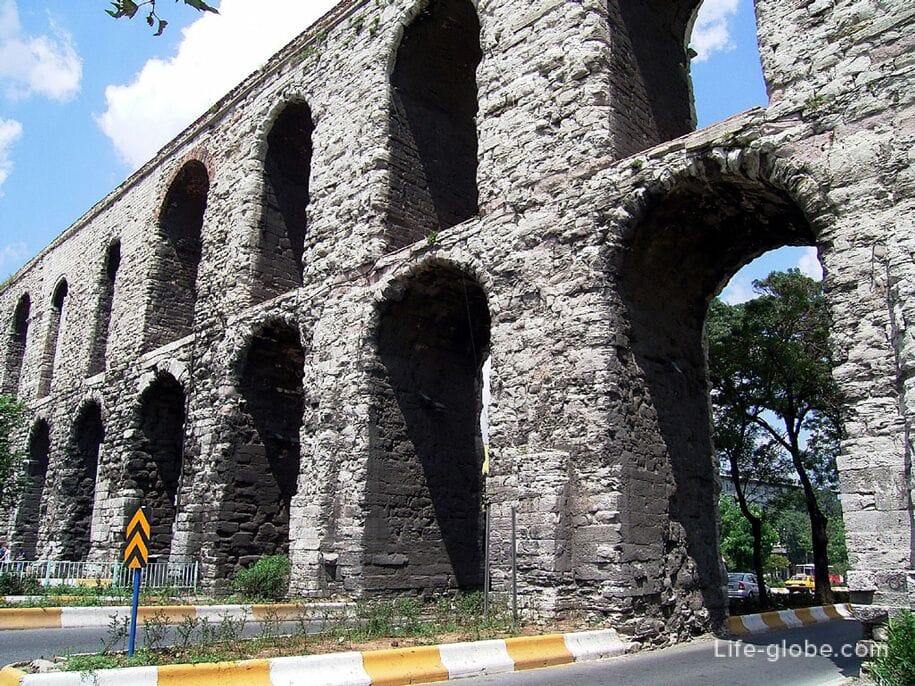
P.S.
If we talk about the dungeons of Istanbul, then do not forget about:
- Edikule Fortress, which was built in 1458 and is famous for its dungeons. Yedikule Dungeon Museum (Yedikule Hisarı Müzesi):yedikulehisari.com (check the information about visiting the fortress on this site). Fortress Address: Yedikule Meydanı Sokak No: 9 34107 Fatih/Istanbul;
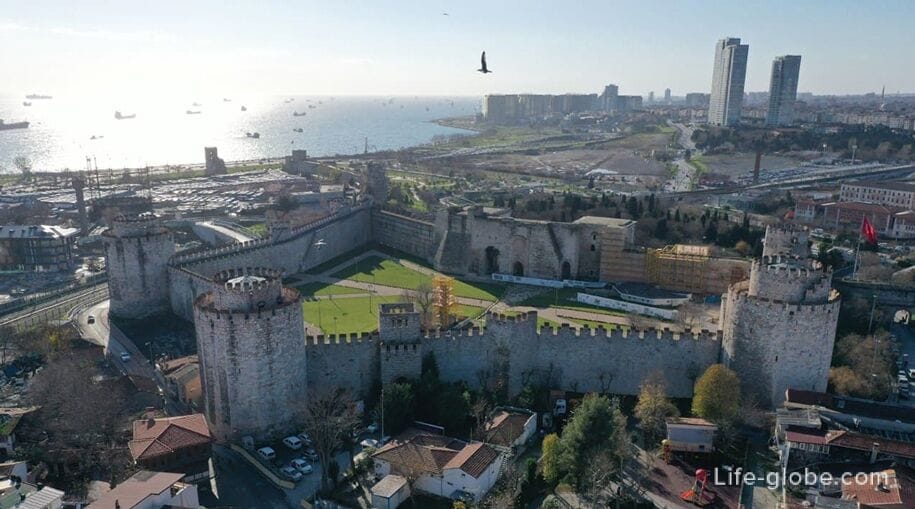
- parts of the Magnaura Palace (Magnaura Place) with the cafe "Palatium Cafe and Restaurant". Address: Kutlugün Sok., No. 33, Sultanahmet, Fatih;
- underground Ottoman mosque "Yeraltı Camii" with arched structures, green lighting and a tomb;
- the museum of the Ottoman Bank (Osmanlı Bankası Müzesi) with an underground money vault. Address:Arap Cami Mahallesi, Bankalar Caddesi No.11, Karaköy.
All accommodation facilities in Istanbul, including in the historical center of the city and more remotely from it, can be viewed and booked here




